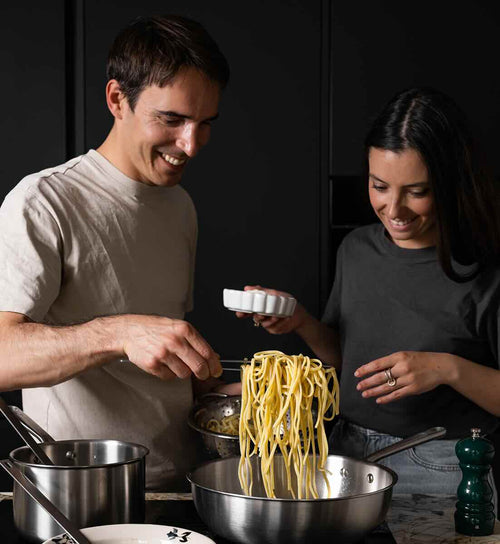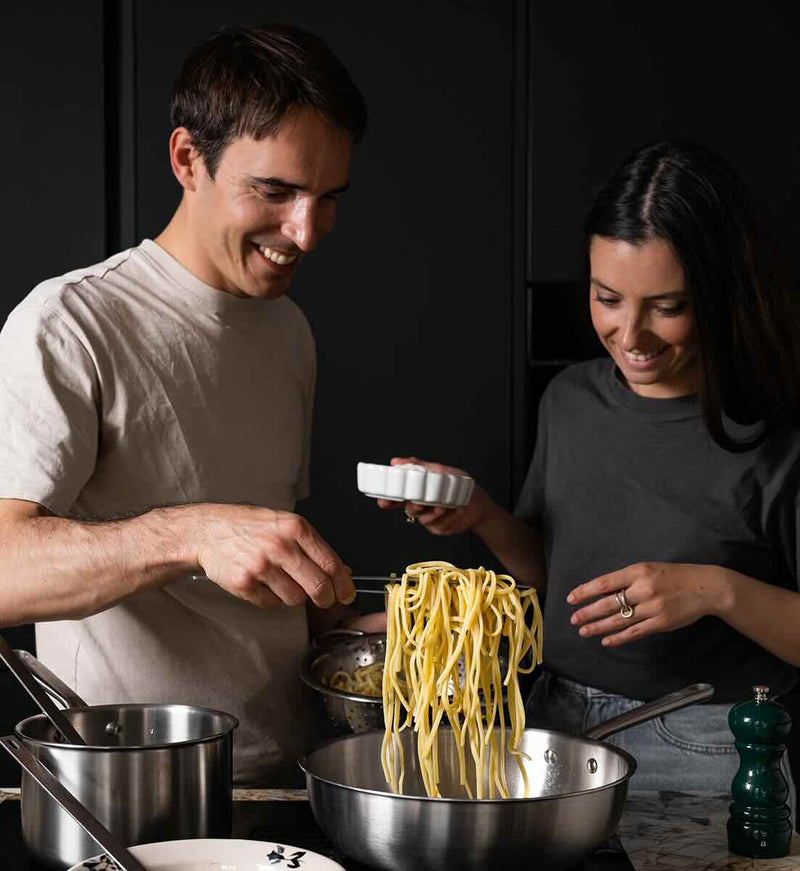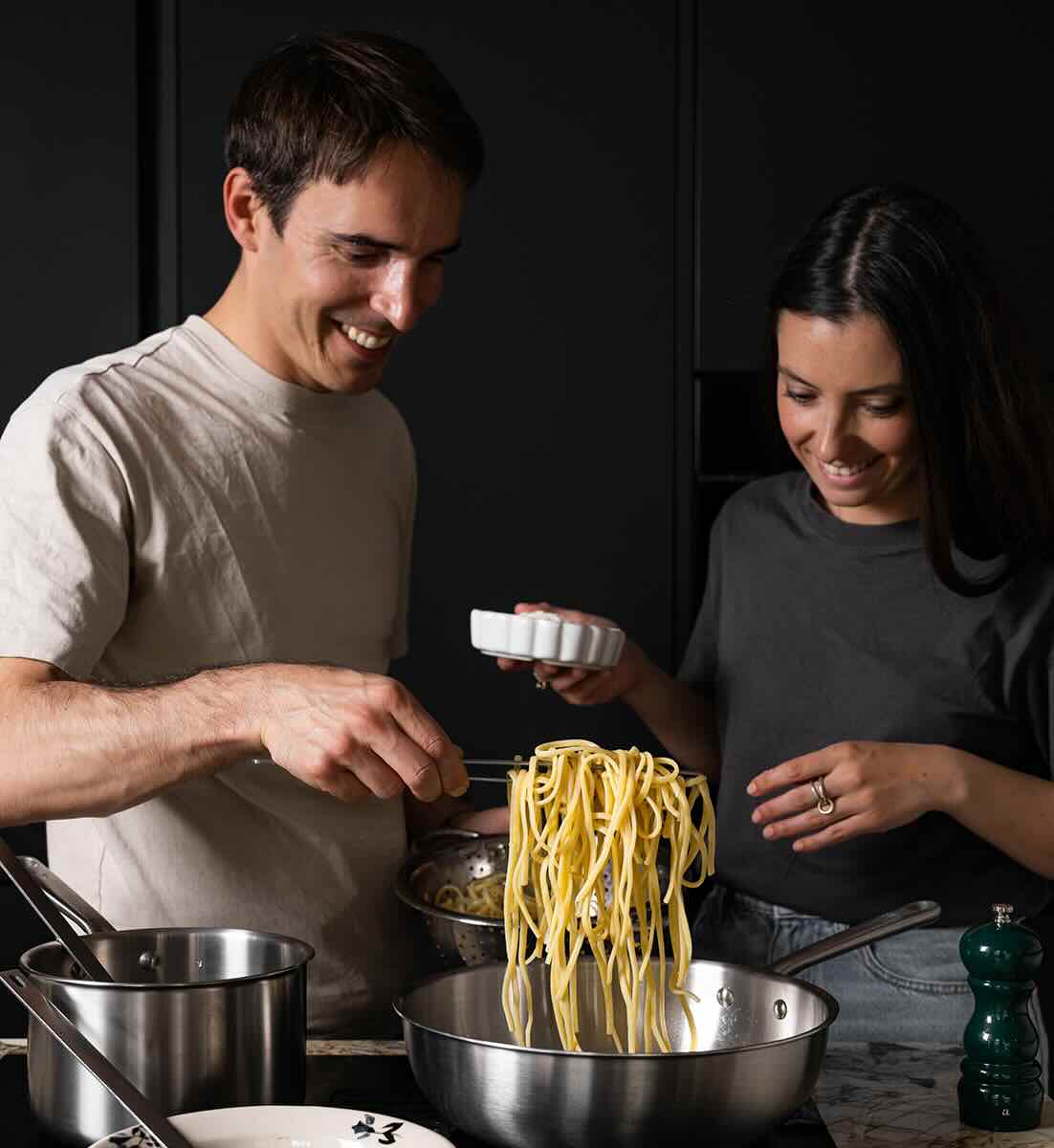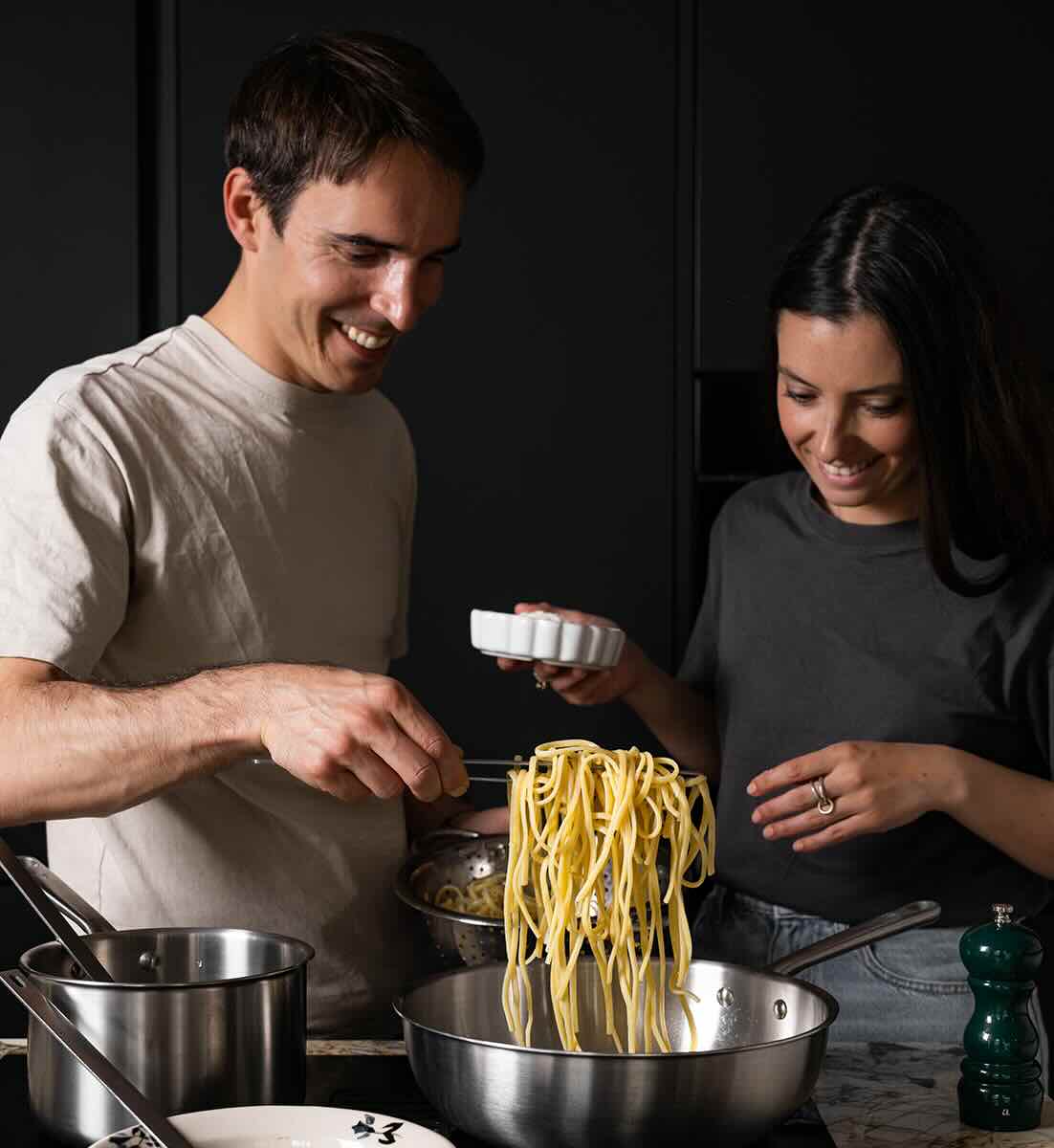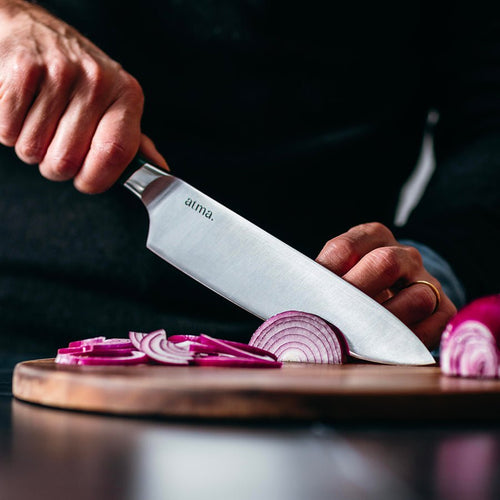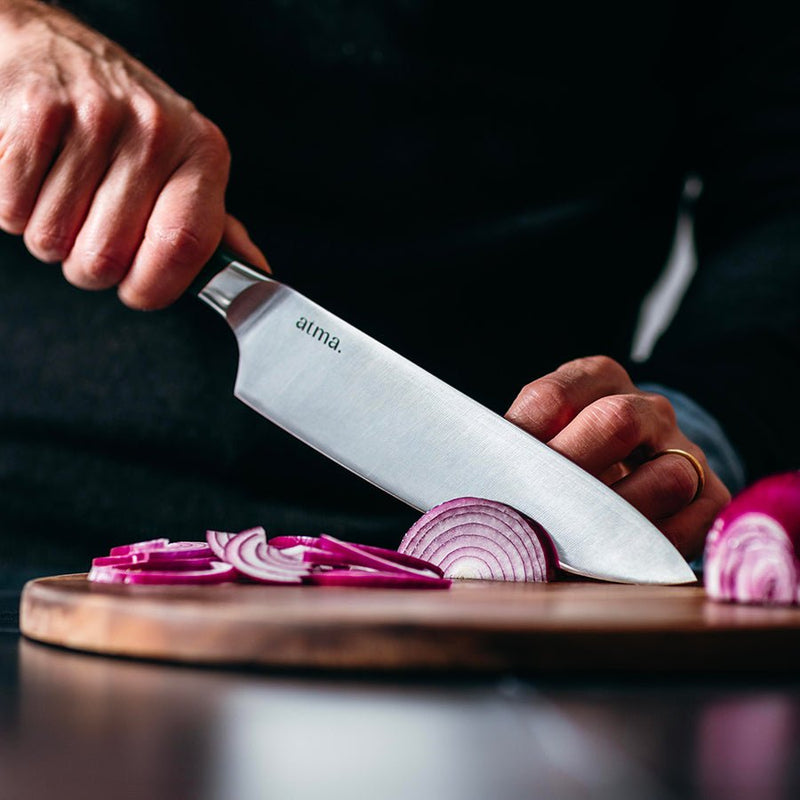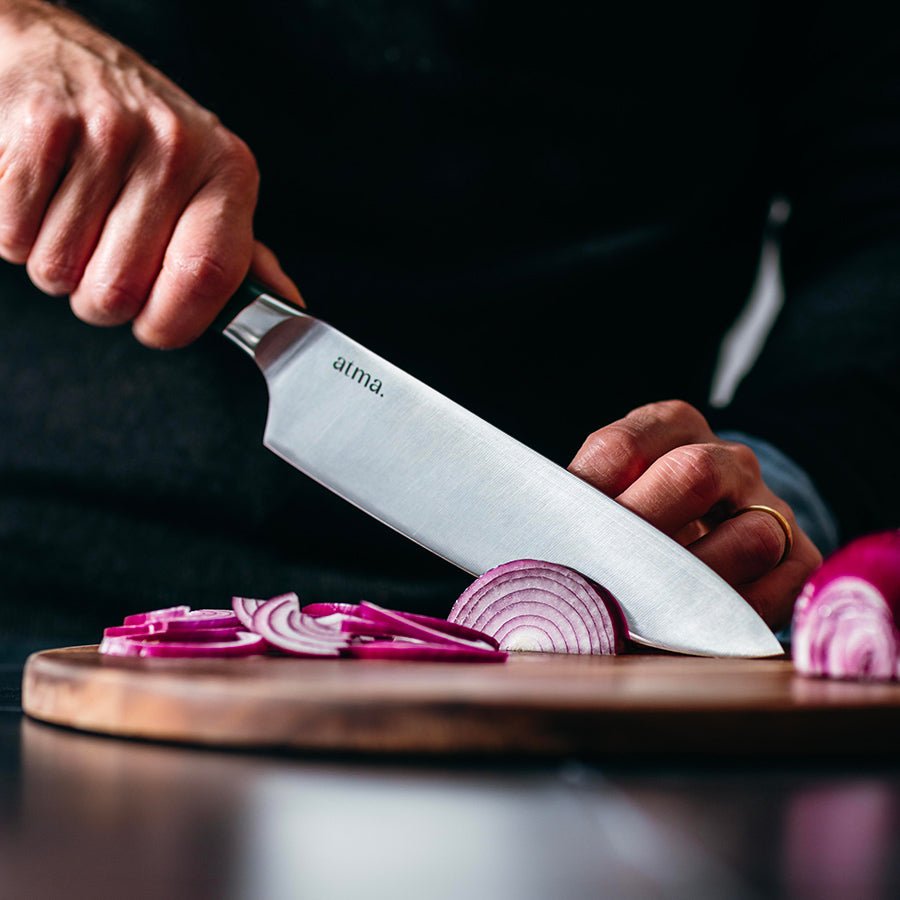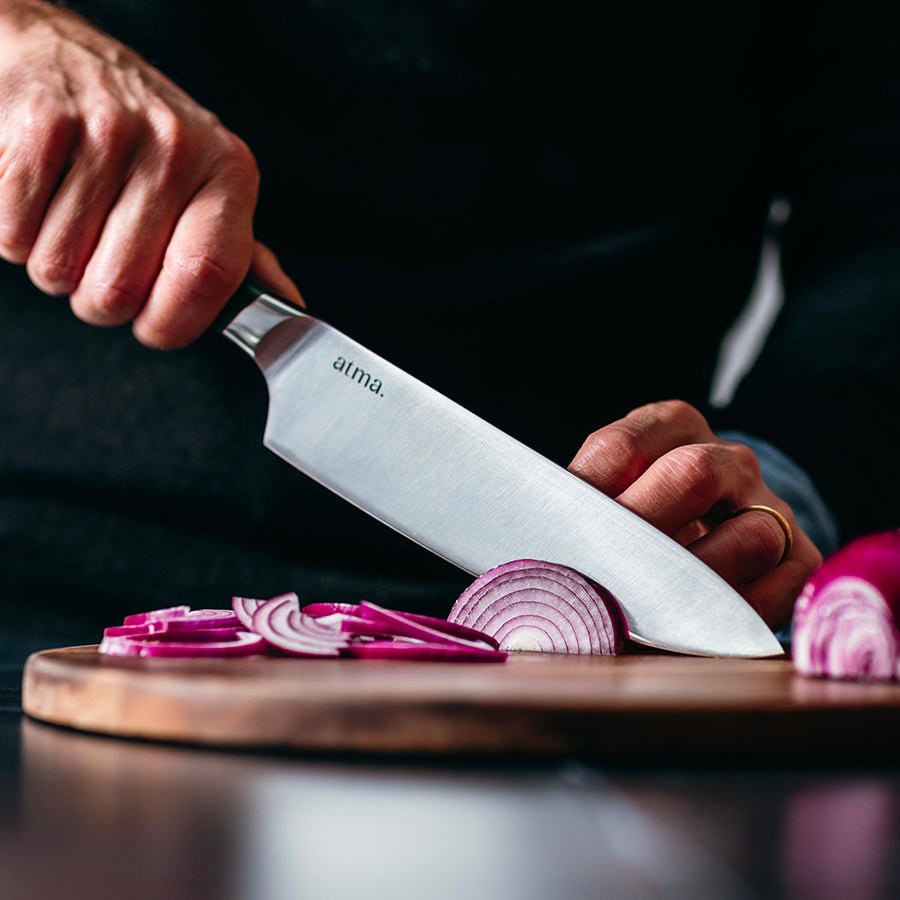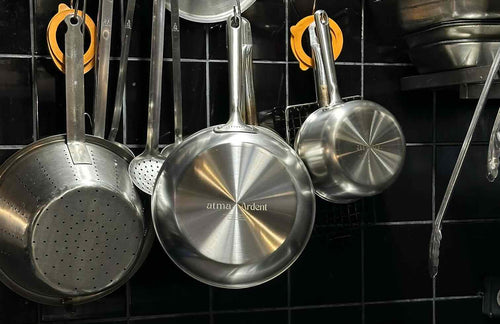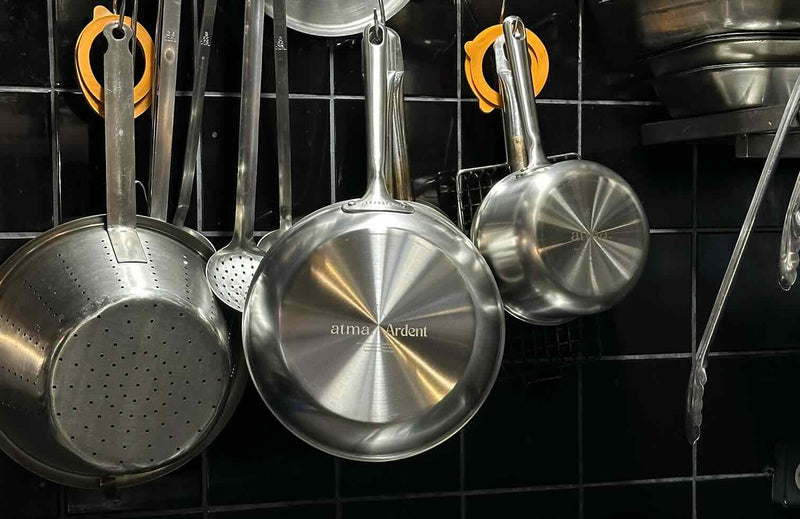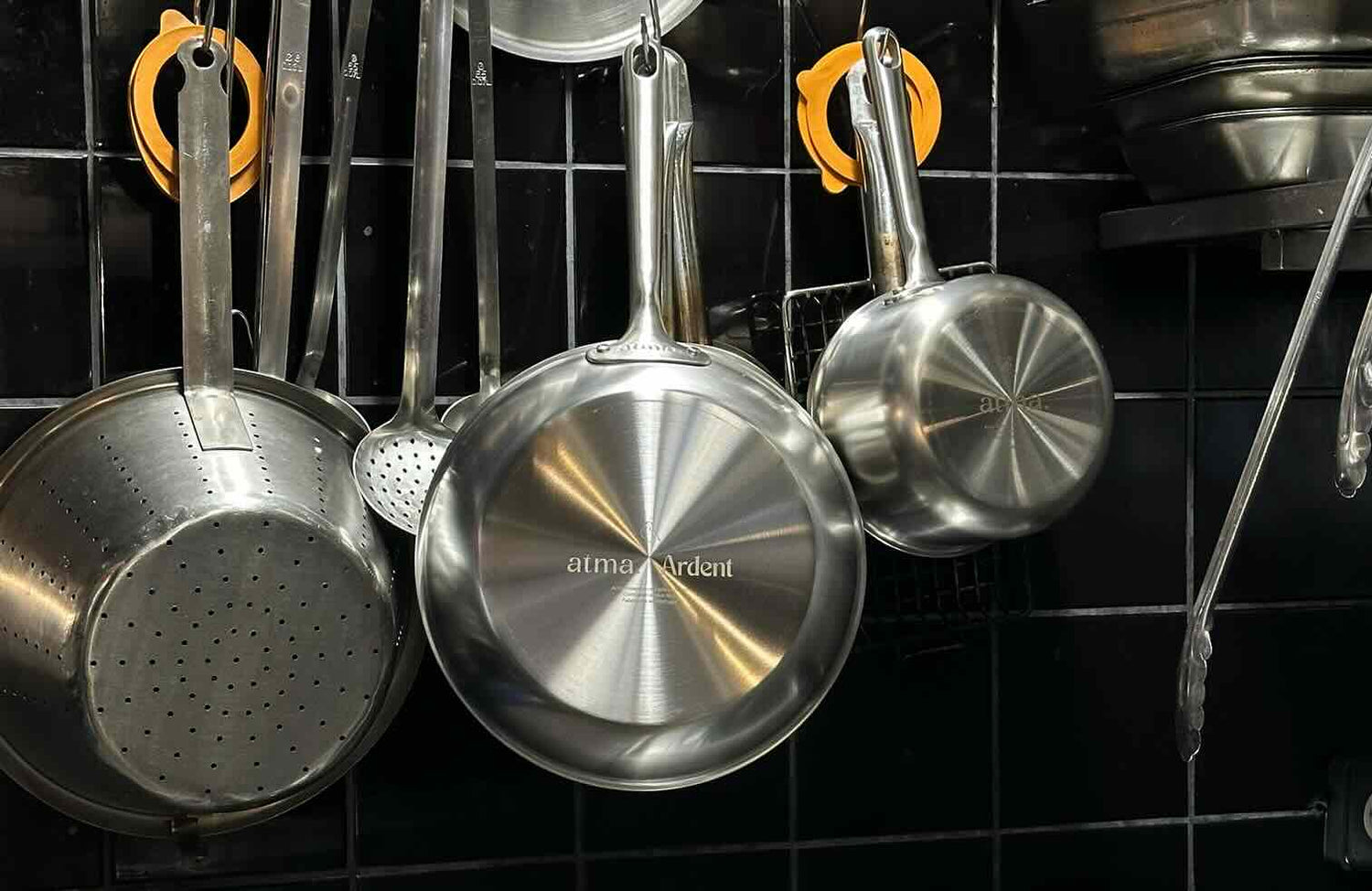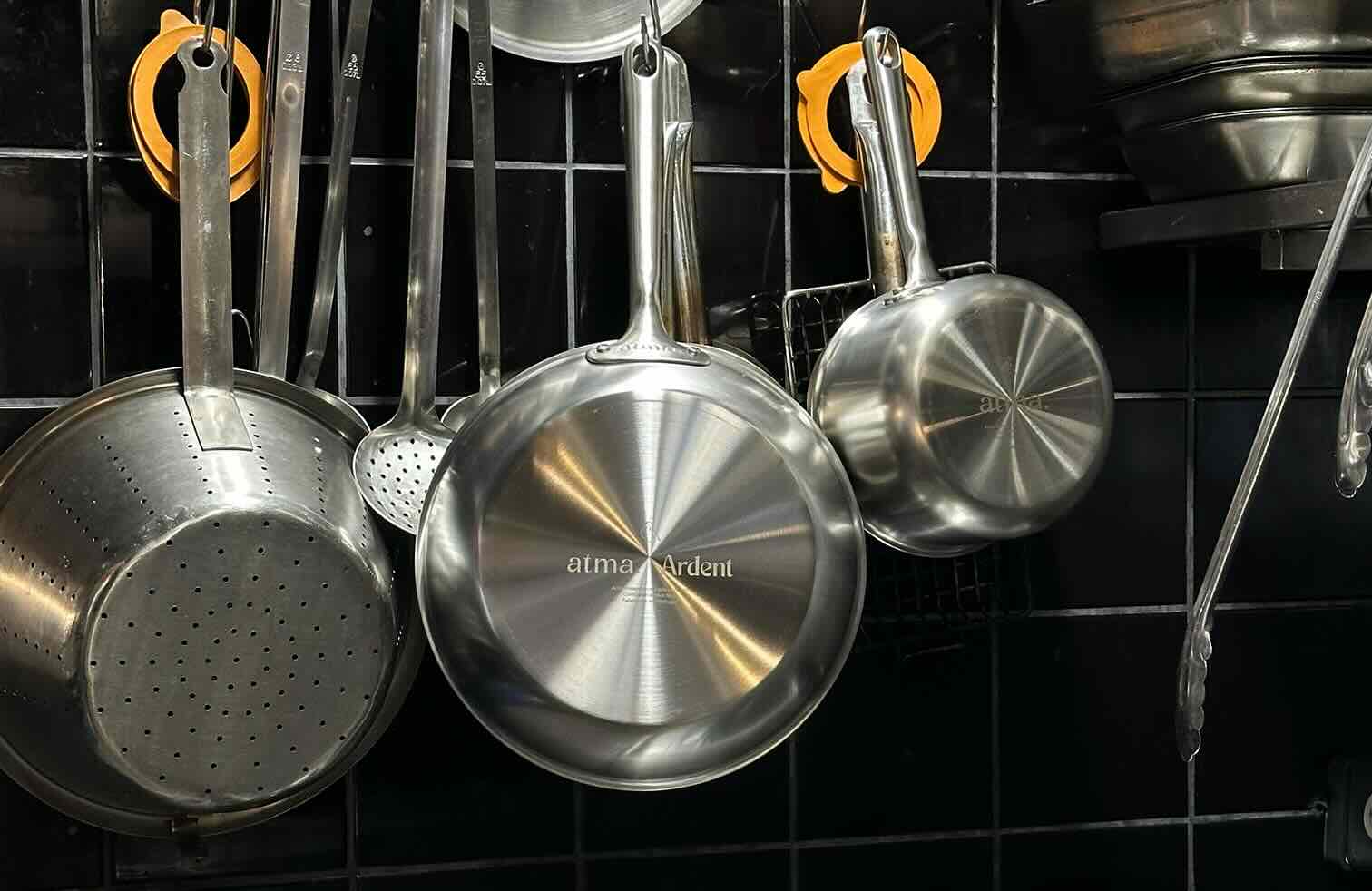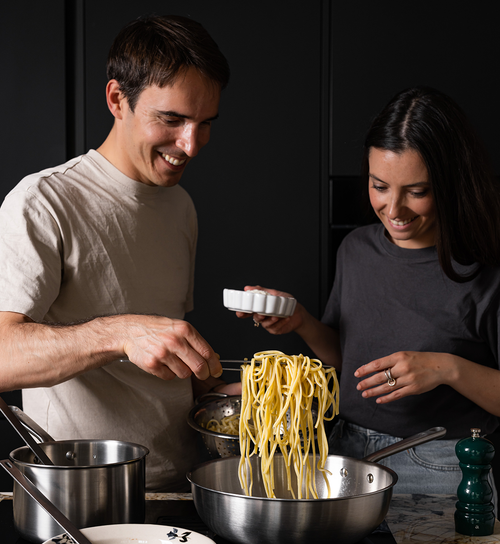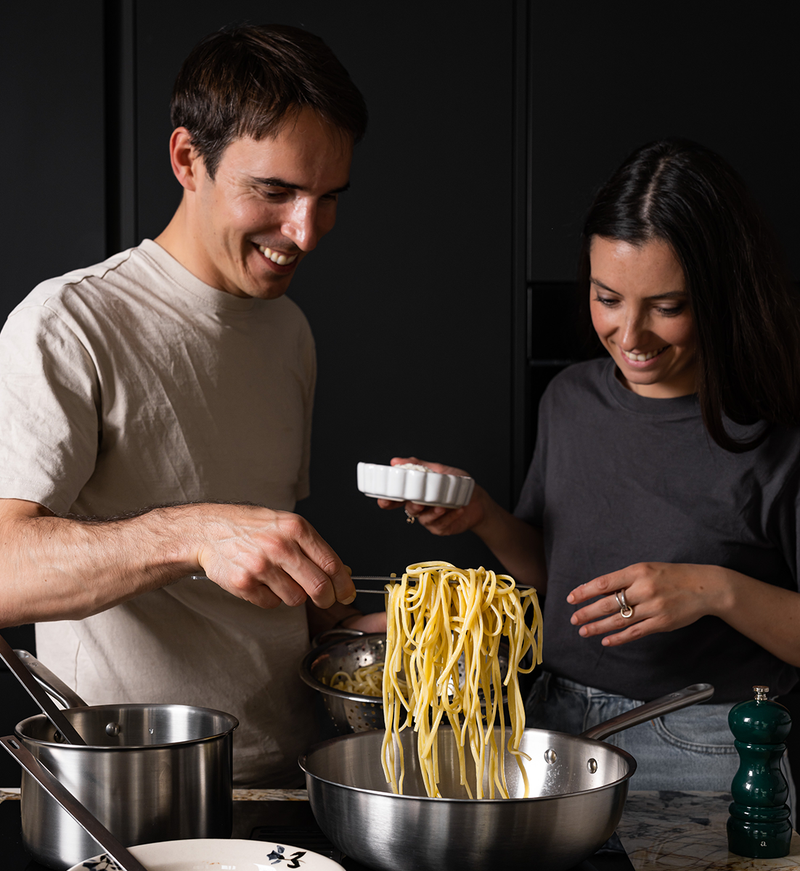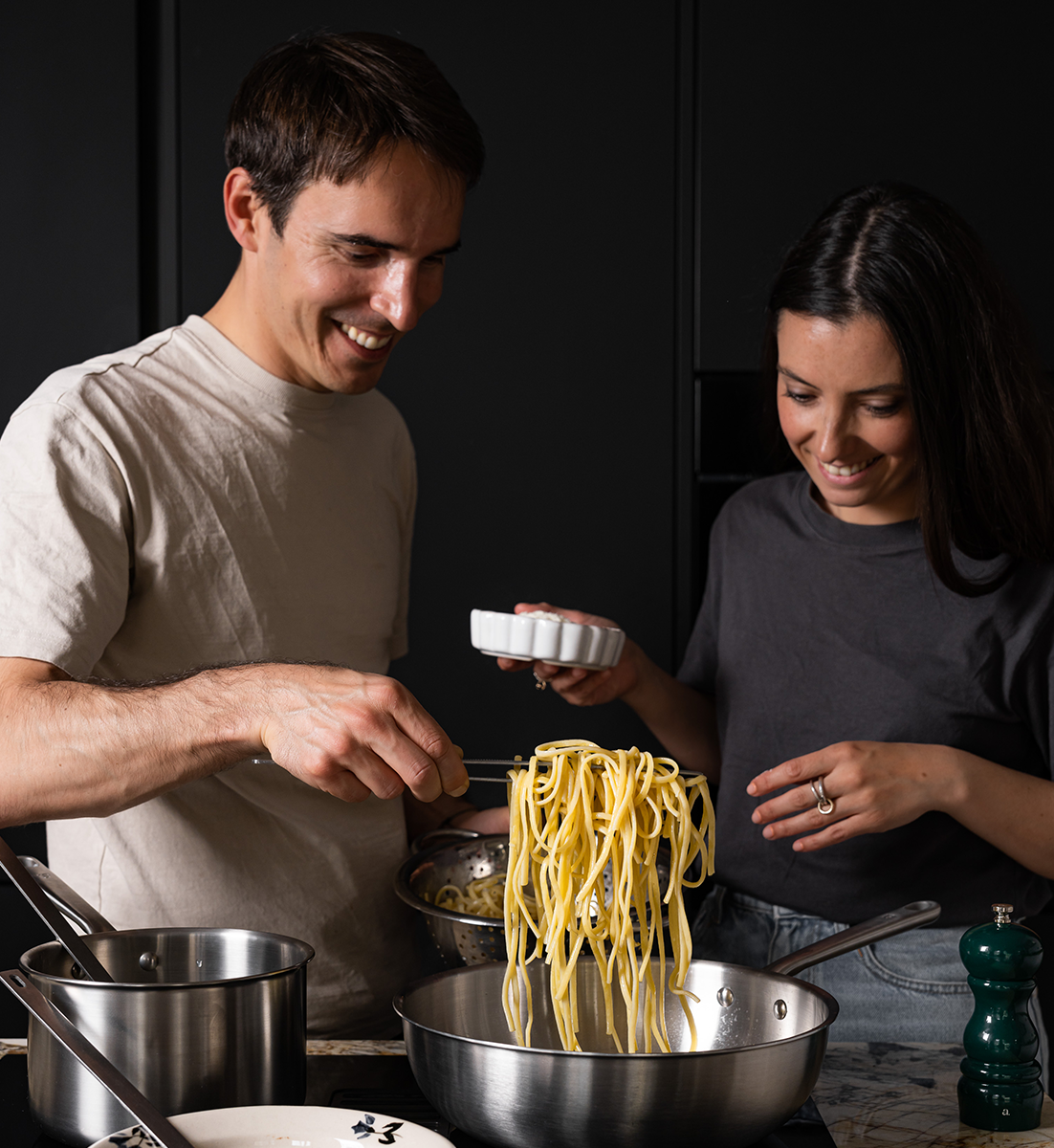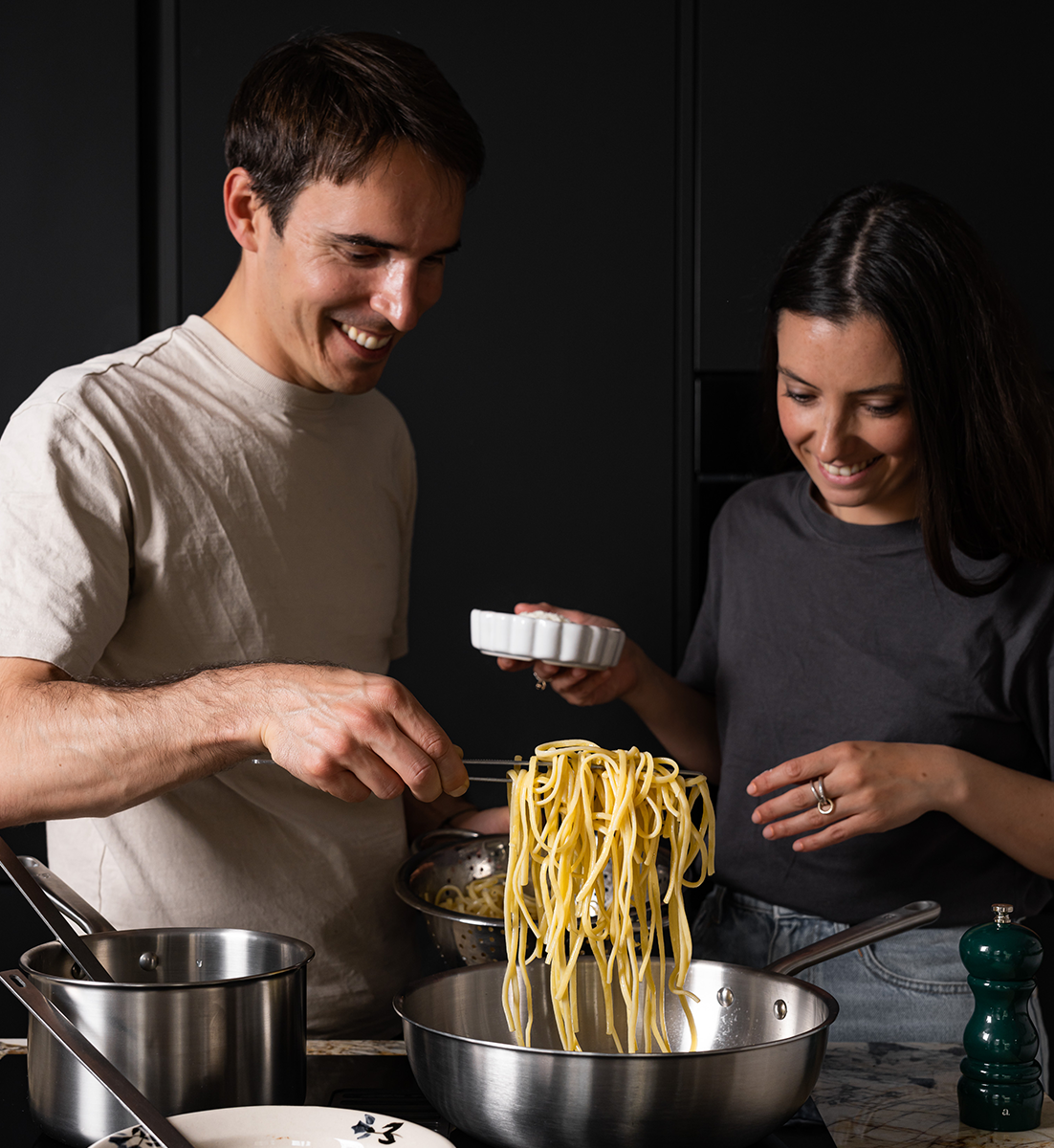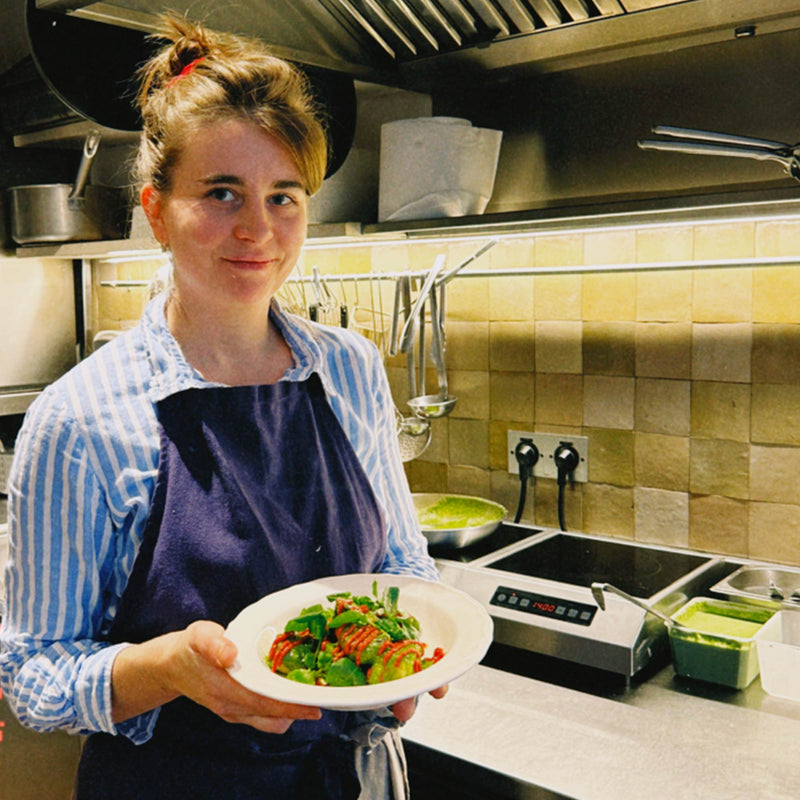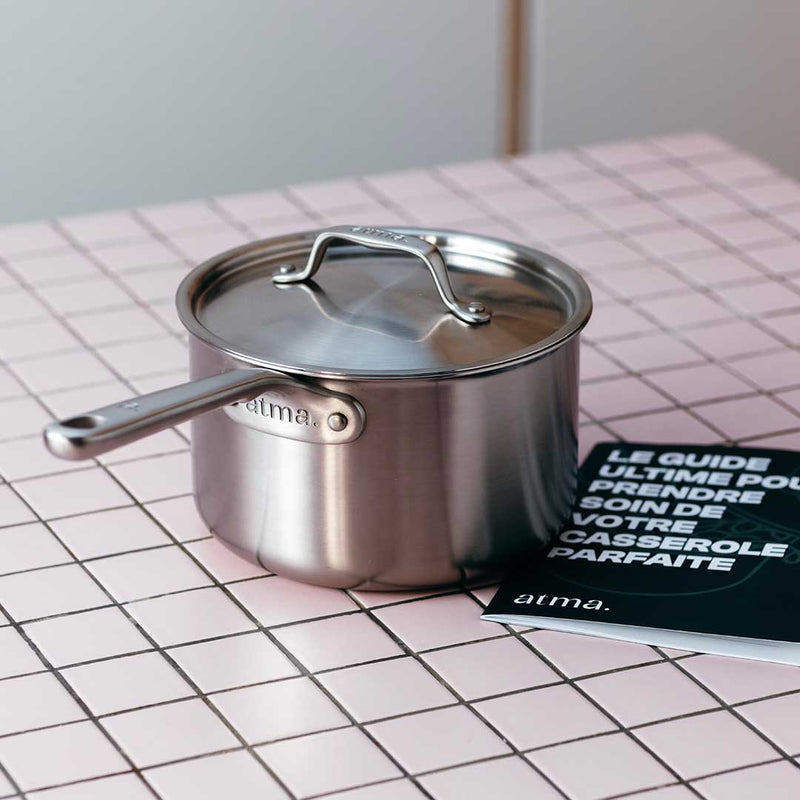How to deglaze a stainless steel pan?
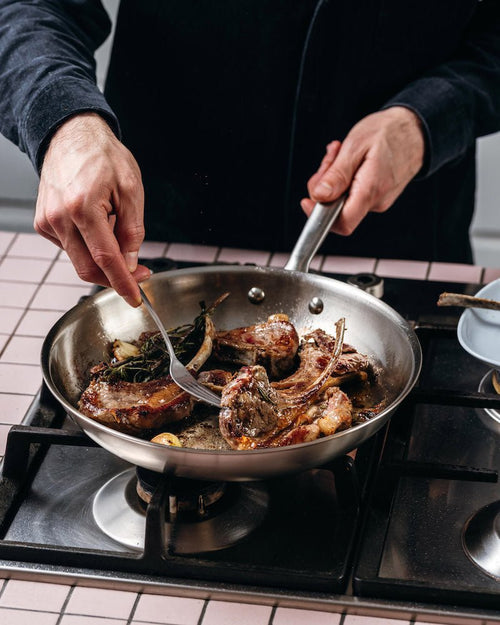
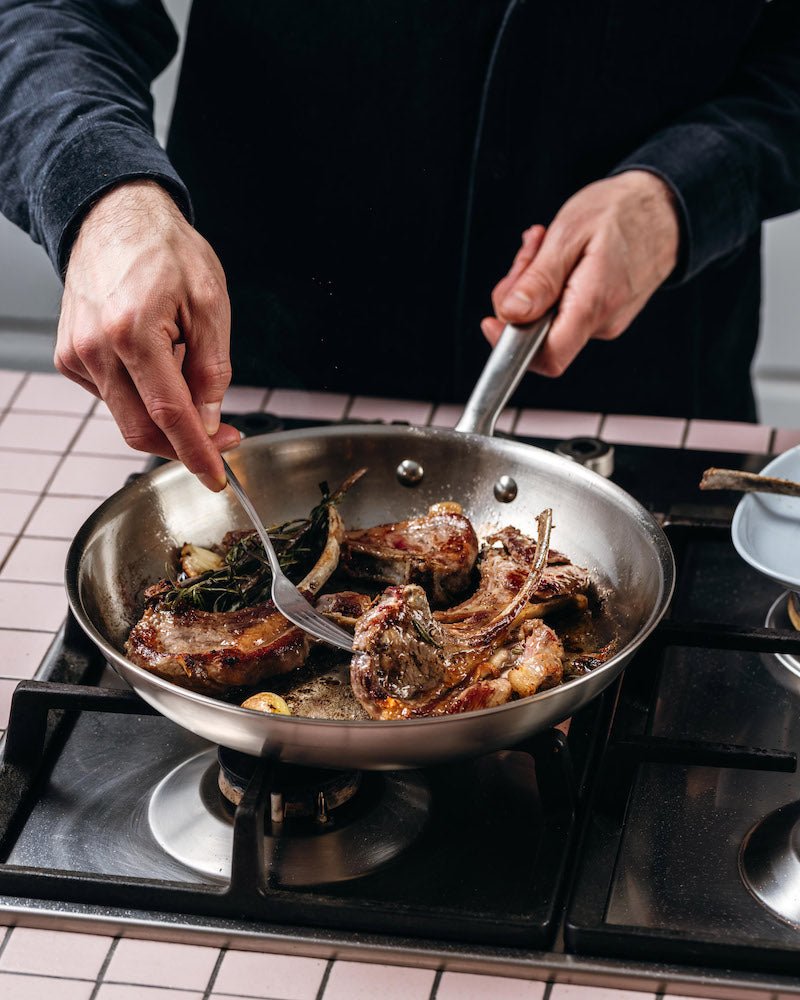

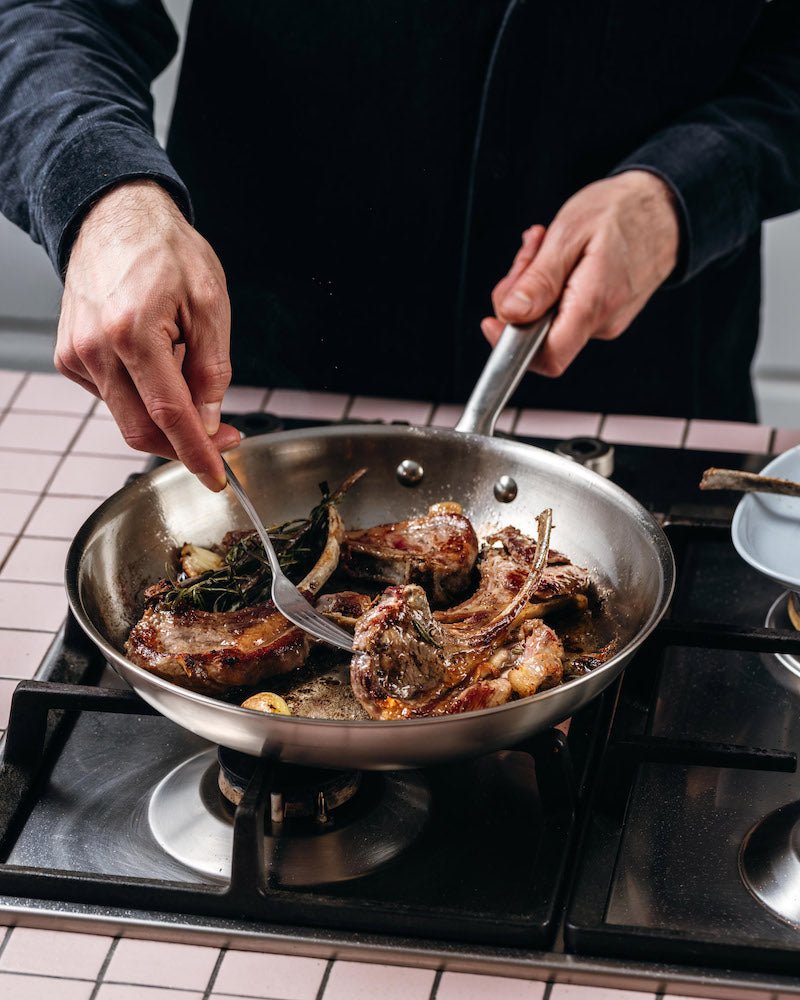




You've probably already encountered this situation: you want to prepare a sauce with the cooking juices,but they remain stuck to the bottom of the pan. Be aware that there is a simple and effective solution to recover them and not waste them: deglazing. This process, much appreciated by chefs, will allow you to make a delicious recipe without too much effort or wasted time. If you've never used this method before, we hope you find our presentation helpful.
-
But first of all, what is deglazing?
Definition of Atma 🧑🍳:Deglazing involves pouring a liquid such as wine, broth, or water into a still-hot pan or saucepan to dissolve the cooking juices that have adhered to the bottom.
These juices contain a wealth of flavors that are often used as a base for sauces.
And by deglazing, you capture these flavors and incorporate them into the sauce, adding extra depth to your dishes.
This process, frequently used in many recipes, involves using fine wines for meats or fragrant broths for vegetables.
Once the liquid is poured in, a rapid reaction occurs that gently lifts the concentrated juices and flavors of the food from the bottom of the pan. The liquid can then be allowed to simmer and reduce to become the base of the accompanying sauce.
In short, deglazing captures all the extra flavors that would otherwise be discarded and lost.
-
What happens during deglazing?
Deglazing works by loosening and dissolving the cooking juices formed during cooking. These juices, which come from the vegetables or meat, are generally trapped at the bottom of the pan. Deglazing releases these proteins and mixes with the added liquid, intensifying the flavor of your sauce.
Another benefit of deglazing is that it allows meat that has already developed a crispy crust but is not yet finished cooking to continue cooking without the risk of burning.
This is because the added liquid helps regulate the temperature and prevents the meat from drying out. This guarantees both a crispy texture on the outside and a tender texture on the inside.
-
So, which pan should you choose?
Well, at Atma, our preference clearly goes to a stainless steel pan for deglazing. Indeed, stainless steel conducts heat better than non-stick aluminum, for example, which allows the bottom of the pan to heat up quickly and caramelized juices to loosen more easily. And thanks to this, you achieve a more efficient reduction of liquids and therefore a sauce richer in flavor.
-
Which liquids should you use for deglazing?
Acidity plays a crucial role in the deglazing process.
Indeed, an acidic liquid is essential for dissolving the juices that have settled at the bottom of the pan. This action allows them to be released and mixed with the liquid, creating an aromatic base for your sauce.
We've prepared a list of options for deglazing a pan:
-
White or red wine: A classic, wine adds a wonderful flavor to pan sauces for steaks and red meats. Other alcohols, such as cognac, are also possible, as in this magnificent recipe for rib of beef in a pan.
-
Vinegar: We recommend trying raspberry vinegar to deglaze your pan, if you haven't already. Its fruity and tangy flavor adds a touch of originality to your sauces, while making them smooth and flavorful. Otherwise, it works with any type of vinegar.
-
Lemon juice: Lemon juice will add a bright, fresh acidity to your sauce, balancing the flavors and adding brightness to dishes. A very practical everyday solution.
-
Soy sauce: This sauce caramelizes slightly during cooking, giving your sauce a more complex and rich flavor. It also pairs perfectly with a variety of dishes, from meat to fish to vegetables.
-
Cream: Cream adds a velvety texture and rich flavor. It can also help thicken the sauce, making it smoother and creamier.
-
- We recommend using a liquid at room temperature, so not too hot, to deglaze the pan. This creates a slight thermal shock that helps loosen the juices. Be careful never to use water that is too cold to avoid a violent thermal shock that could damage your pan.
- You can scrape the bottom of the pan with a wooden spatula to thoroughly mix the juices with the liquid.
-
THE CHEF'S TECHNIQUE STEP BY STEP
The process is quick and simple:
- Carefully remove the meat from the pan and place it on a plate to drain.
- Then, in the same still-hot pan, pour the ingredients of your choice: white wine, cognac, red wine, or port! For those with a sweet tooth, you can add cream to thicken the sauce and flavorings such as mustard and spices.
- If using alcohol, be sure to remove it by flambéing it or letting it cook until the vapors no longer sting, and do this before stirring in cream or other spices.
- Gently scrape the bottom of the pan with a wooden spatula to collect and dissolve all the browned bits. Avoid using a metal spoon as this will alter the flavor of the sauce.
- Then return the meat to the pan and reheat over low heat for a few minutes.
- Atma Tip🧑🍳: To make the sauce glossy once reduced, we recommend adding a little butter and mixing well.
- And finally, slice the pieces of meat, pour the fragrant sauce over them, and that's it! Nothing could be simpler for making a delicious sauce with meat juices.
Finally, in addition to helping you concoct flavorful sauces, you can also use deglazing to clean your stainless steel pan! Yes, all you need to do is pour a glass of room-temperature water onto the still-hot pan, then scrape with a wooden spoon to remove most of the residue.
Discover our best sellers
By Romain De Bona
















